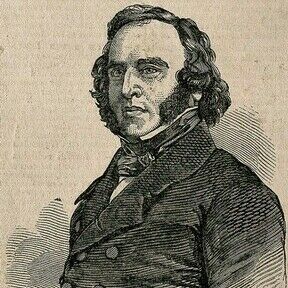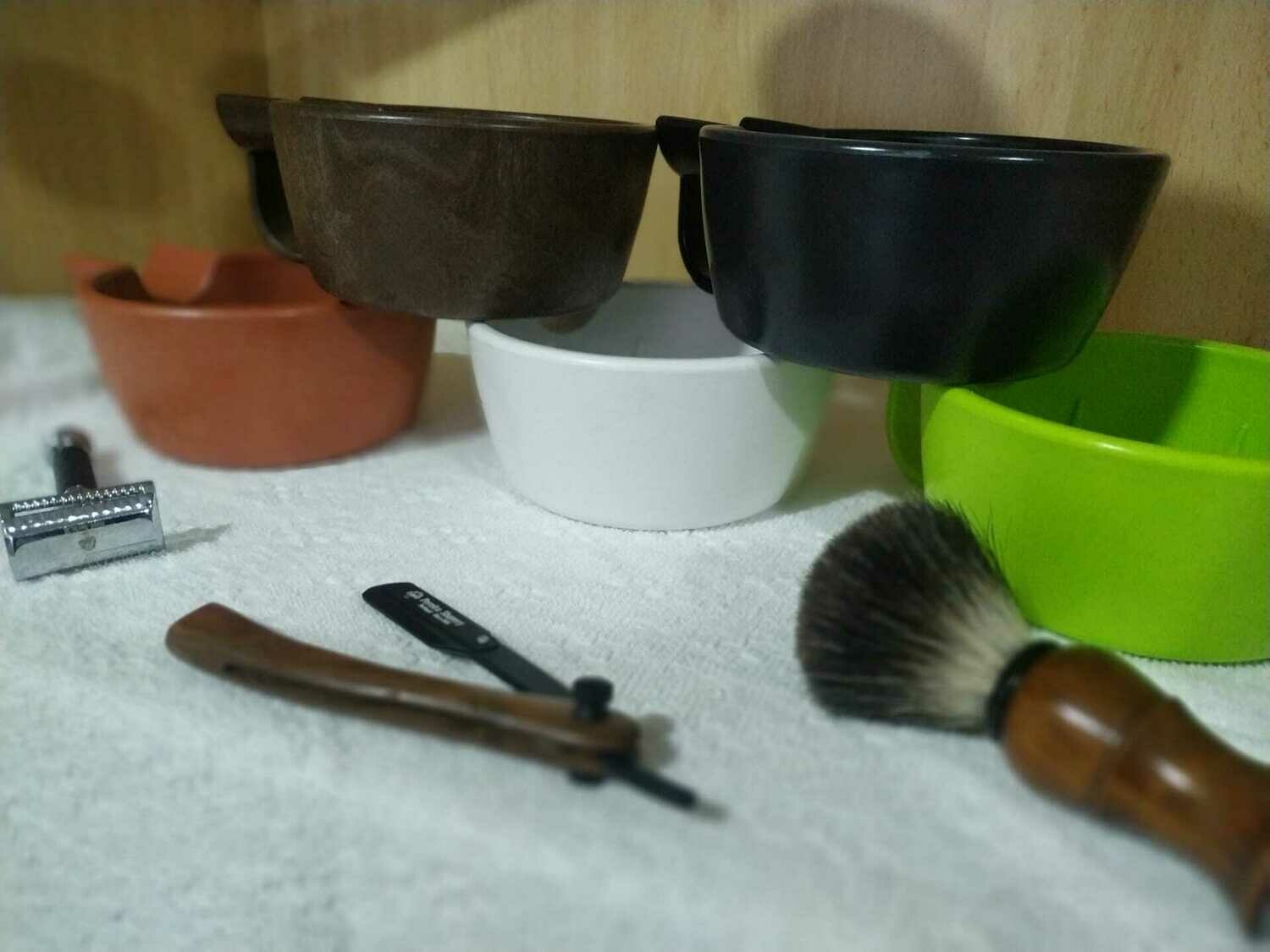

Pereira Shavery
Pereira Shavery the Original
Home of the Activated Charcoal Soap
Pereira Shavery Unbreakable Shaving Bowl Large
Stylish, simple in use, serviceable, durable, and unbreakable - what more can a man ask for in a shaving bowl? Available in a wide range of colours, Pereira's plastic shaving bowl stands 7 cm (just under 3 inches) tall and has an inner diameter of 12.5cm (5.4 inces) - large enough for shaving brushes large andsmall. A finger loop under the built-in brush rest allows for a secure grip, while the pattern and ridges inside aid in the rapid building of lather.
Pereira’s Unbreakable Shaving Bowl has a unique pattern to build shaving lather fast. Large enough for large and small shaving brushes, it has a built-in brush rest and finger-loop for secure grip while making lather.
Bring the Unbreakable Shaving Bowl wherever you travel, knowing that it’s big enough to do the job, small enough to fit in the bag, and no amount of abuse will hurt it.
Our Story
Do you know where the oldest soap recipe in the world comes from? The soap, containing oil and ash, can be credited to the Sumerians. And for over 5000 years now, the basics of soap making and manufacturing have remained the same; a process in which oils and fats are boiled with alkalis (sodium or potassium hydroxides) to create a soap base.
Ok! But What about Shaving Soaps?
Shaving soaps are comparatively newer, having been first manufactured in the14th century. The popularity of these soaps soared right until the First World War, when suddenly shaving creams became a more use doption. Shaving soaps, though, have retained their image as a luxurious, indulgent experience and receive favor from shavers who appreciate the traditional wet shaving experience A good-quality shaving soap has high levels of vegetable or tallow fats and glycerin. Acting as a humectant, glycerin (which is derived from vegetable oils) locks in water, thereby, hydrating the skin. Glycerinis also an effective emollient, softening the beard and leaving the skin smooth and moisturized. Without fat content, shaving soaps will not provide the lubrication and protection necessary for the skin. It is due to the fat content that the blade glides easily over the surface of the skin without irritating or nicking it.
How do I pick a Shaving Soap?
As described earlier, the best shaving soaps are those which have high levels of fat. Choose soaps that have about 30%-50% fat content. Good-quality shaving soaps are triple-milled, which increases lather profuseness and produces creamy foam, leaving the skin smooth and soft. The problem arises from the fact that most shaving soaps available currently are bath soaps masquerading as shaving soap and, therefore, provide minimal or no protection to the skin leaving it dry and irritated. Is
There a Shaving Soap I can Use?
Introducing the Pereira Shavery Soaps! To solve the problem of an effective shaving soap, we went back in time to find the recipe created by our ancestor Dr. Pereira. Credited with formulating many of the modern-day recipes for shaving soaps, he was considered a pioneer in the industry and was quoted in several popular books and magazines of the time, including The Chemist and Druggist, a monthly trade circular, and The Harper's Universal Recipe Book of 1869. We took that age-old recipe and modernized it without losing the science behind it and its original essence. Our research and experimentation has led us to this moment, the release of our first product. Incorporated with activated charcoal, our shaving soaps have detoxifying, cleansing, exfoliating, and clarifying properties that leave your skin feeling soft and supple, without the dryness of regular shaving soaps. Activated charcoal also minimizes acne by exfoliating and drawing out dirt and oil which can clog pores and cause breakouts.
What Differentiates Pereira Shavery Soaps?
Our packaging is a throwback to the good times of the past. The soaps come in two unique, traditionally old world, soap dishes, a standard ceramic dish and a package that consists of a ceramic soap dish and foaming dish combined in one. The latter preserves your soaps and provides a resting space for your shaving brush. Our aim is to bring back the old-world charm of a proper shave; a moment where nothing interferes with your shave, leaving you refreshed after just a few minutes of our luxurious shaving experience. This is our movement to bring back the experience of a great shave. A few minutes of your time to create everyday moments that will become your respite from the daily hustle of life. We hope that you will enjoy the Pereira Shaving experience.
Our Inspiration

Jonathan Pereira
Jonathan Pereira
Jonathan Pereira FRS (22 May 1804, London – 20 January 1853) was a pharmacologist, author of the Elements of Materia Medica, a standard work. He was examiner on the subjectin the University of London.
Life
Pereira graduated in Apothecary in 1823 after studying at the Aldersgate General Dispensary and St Bartholomew’s Hospital. In 1826 he became lecturer on chemistry at the Royal College of Surgeons and in 1832 he was an established physician in London, being appointed professor of materia medica and lecturer in chemistry at the Aldersgate Medical School. In 1839 he became professor and lecturer at the London Hospital, where he received the position of assistant physician in 1841. Jonathan Pereira delivered the introductory lectures on Materia Medica in 1842 at the Pharmaceutical Society and one year later he was appointed as Professor of Materia Medica by this institution, examining the subject in the University of London.
His subject area was the forerunner of pharmacology and he published a series of research papers on plant drugs. Pereira later resigned in 1852, the result of a dispute between the Council of the Pharmaceutical Society following the illegal publications of his lecture material. After this incident another teacher in material medica was not appointed, instead Robert Bentley, who was professor of botany at the time, was asked to combine the lectures with hisbotany lectures.
Pereira’s Materia Medica
His interest in the area of crude drugs began when he realised that little was known about those imported into Britain. After years of research he acquired an extensive knowledge of the history of origin, morphology and histology of crude drugs where he was later appointed professor of material medica at the London Hospital. His book on Materia Medica was the first great English work on Pharmacology and he was foremost in putting the knowledge and use of drugs on a scientific footing. During one of his first lectures held at the School of Pharmacy he spoke about ‘material medica consisting of three parts: (1) pharmacognosy, pharmacology, pharmacopathia or the history of simple drugs; (2) pharmacy, and (3) pharmacodynamics. It was here that he referred to the study of crude drugs under the name pharmacognosy instead of materia medica in what appeared to be the first time in which it was used, when in fact it wasintroduced by Seydler in 1817. It took many years until the term was officially used as the name of the subject taught to pharmacy students. Students of Pharmacy studying for their major examinations were given the opportunity of examining the drugs further as well as being introduced to the microscope as another method for the examination of drugs in their powdered form such as starch, with the exception of vegetable drugs. Although where notbeing examined on authenticity and quality, Pereira encouraged his students to investigate authenticity and quality of drugs, something that he was carrying out a lot of research on at the time. This was considered an important part of the pharmacists role as Jacob Bell pointed out ‘the reputation of pharmacy depended upon pharmacists having this expertise.
Pereira was named a Fellow of the Royal Society in May 1838. Two years later he received the degree of M.D. “honoris causa” from Erlangen University. In his memory a marble bust was erected in the London Hospital and the Pharmaceutical Society founded the Pereira Medal and a scholarship fund with his name.
More Infor:
http://www.jewishencyclopedia.com/articles/12021-pereira- jonathan
